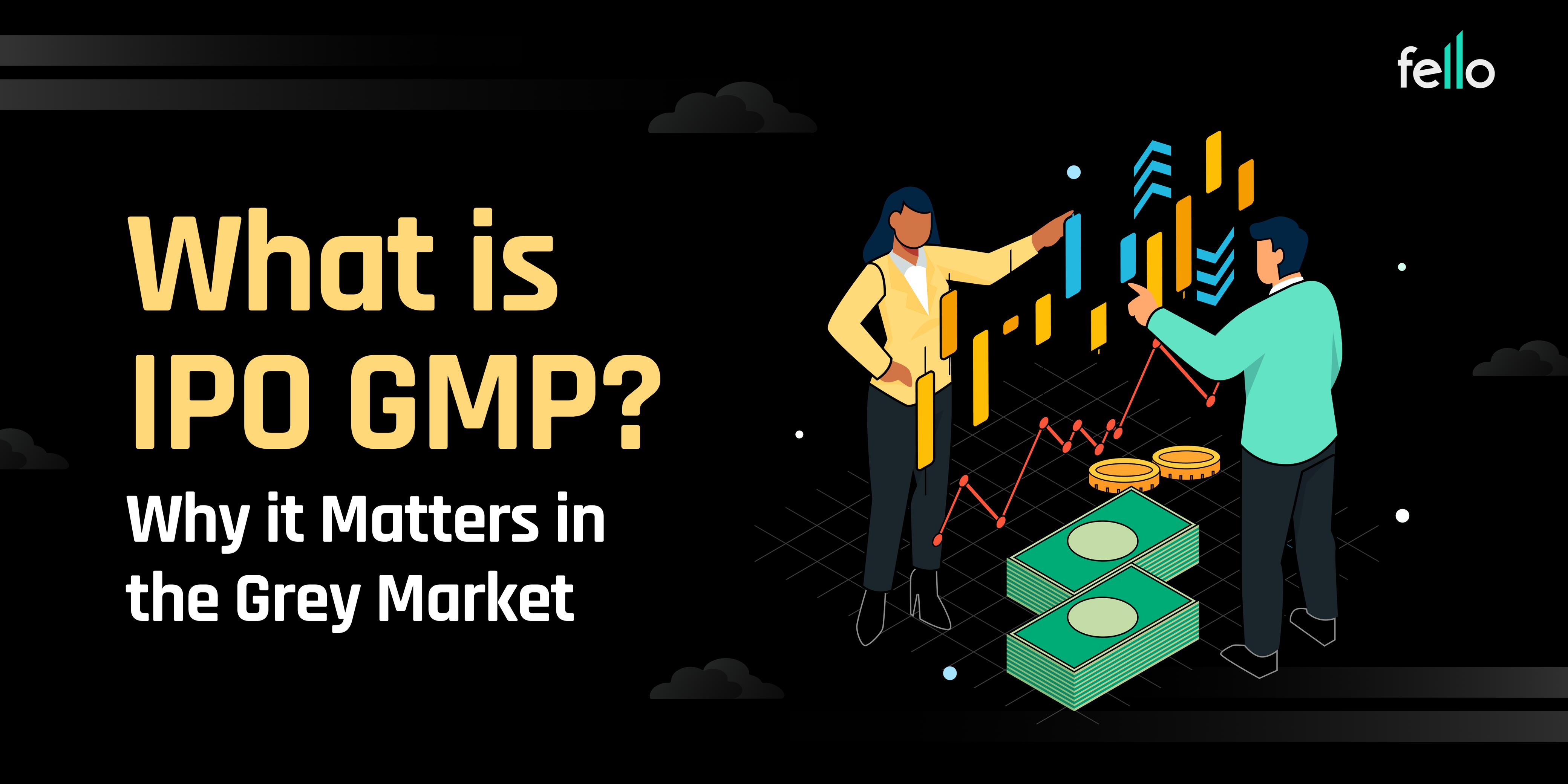When it comes to investing in IPOs, there’s one term that often grabs headlines before the actual listing, IPO GMP, or Grey Market Premium. But what does it really mean? And how does it impact investor sentiment? In this blog, we’ll break down what is IPO GMP, how the grey market works in India, how GMP influences IPO pricing, and what retail investors should know before getting involved.
Explore: What is Options Trading in the Stock Market?
What is the Grey Market and How Does it Work?
The grey market is an unofficial marketplace where IPO shares are bought and sold before they are listed on the stock exchange. Since these transactions aren’t regulated by SEBI, they occur off-the-record through unofficial dealers or brokers.
Understanding Grey Market Premium (GMP)
IPO GMP refers to the premium at which the shares of an IPO are being traded in the grey market before official listing. If a company’s IPO is priced at ₹100 and it’s being traded at ₹130 in the grey market, the GMP is ₹30.
Key Factors That Impact IPO GMP
- Company Fundamentals: Strong financials and growth prospects drive higher GMP
- Subscription Status: Oversubscription boosts premium expectations
- Market Sentiment: Bullish sentiment leads to aggressive pricing in the grey market
- Anchor Investor Participation: High-quality anchor investors improve credibility
Calculating GMP for IPOs
There is no formal formula for calculating GMP, it’s purely based on demand and supply dynamics among grey market traders. However, websites and forums often provide real-time GMP data based on trade feedback.
Formula (Unofficial):
Expected Listing Price = IPO Price + GMP
Relationship Between GMP and IPO Listing Prices
Although a strong GMP can indicate a positive listing, it’s not a guaranteed outcome. Market volatility, global cues, and last-minute investor sentiment can swing actual listing prices away from GMP expectations.
Types of Trading in the Grey Market
- Application Trading: Investors sell their IPO application allotment in the grey market even before allotment happens.
- Share Trading: Buying/selling of allotted shares before listing, based on unofficial contracts.
How IPO Shares Are Traded in the Grey Market
- Deals are done on mutual trust and through dealers
- No formal documentation or legal agreement
- Money is exchanged in cash or through informal banking channels
- Risk of default exists as it’s not under any regulatory oversight
Influence of GMP on Retail Investors
Retail investors often use GMP as a benchmark to decide whether or not to subscribe to an IPO. A high GMP can indicate high demand, which increases the chances of listing gains.
GMP and Its Impact on Different Stakeholders
- Retail Investors: May get swayed by high premiums
- Promoters: Use GMP as a marketing metric
- Analysts & Media: Monitor GMP for sentiment tracking
- Brokers: Facilitate unofficial deals in the grey market
How to Safely Navigate Grey Market Trading
- Know the risks: It’s unregulated and deals are unofficial
- Never rely solely on GMP for investing
- Use GMP as a sentiment indicator, not a valuation tool
- Be cautious with dealers and brokers offering grey market trades
Explore: How to Trade in Futures and Options
Final Thoughts
Understanding what is IPO GMP and why it matters in the grey market can give investors an edge in gauging public sentiment around an upcoming IPO. But while GMP can offer insights into potential listing performance, it shouldn’t be your only guide. Treat it as a directional cue, not an investment guarantee. Stay informed, stay cautious, and always do your own research before applying for any IPO.

